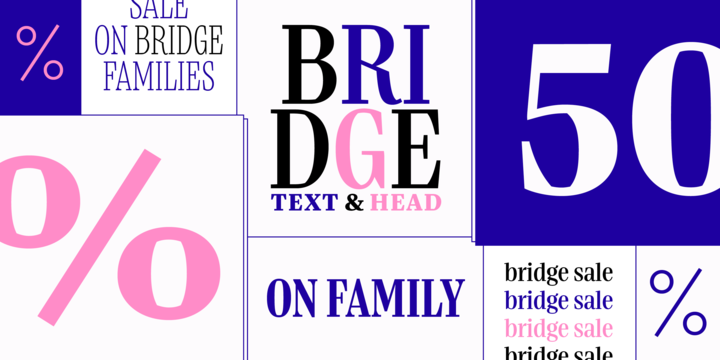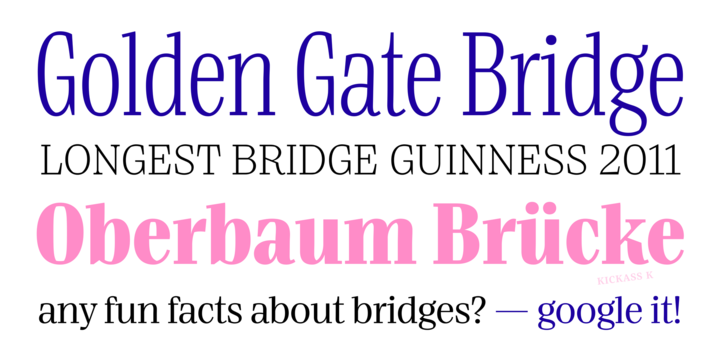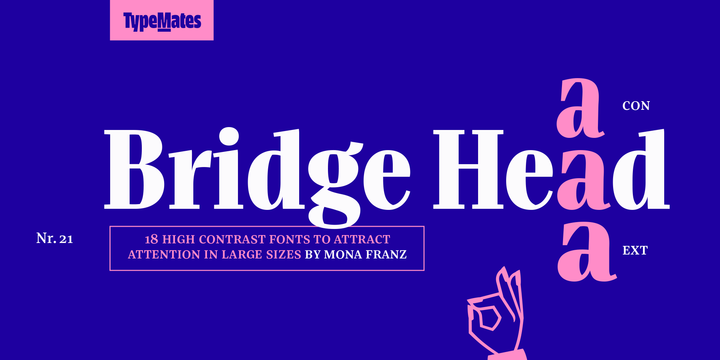
With three different widths in six weights, Bridge Head has the perfect voice for stunning titles. A solo career in posters, banners and logos doesn’t stop Bridge Head from rocking in concert: each of her 18 display styles can work together with Bridge Text to tell stories and build complex typographic ensembles in editorial and corporate design.
Where other display typefaces let their thin strokes fade away, Bridge Head keeps the volume and emphasises her wedge serifs and curvy detailing. A large x-height brings out her distinctions, like the four-cornered counter shapes, the voluminous terminals and the monolinear lines that connect her thick strokes and help give Bridge her graphic image.
A type system flexible enough to bridge print publishing to digital media, with a kickass K and rebellious R, Bridge Head can shout out loud and make a design that can take her intensity unmistakable and independent of slick conventions.
With hands-on OpenType features like small caps and case-sensitive punctuation and more than 800 glyphs, Bridge can fulfill your every display need. Adobe Latin 3 (and beyond) encoding gives a wide range of Latin language support and additional helpful symbols like the charming manicules and dingbats complete a rich typographic palette.
Bridge’s ideas and foundations began during TypeMedia 2018 in The Hague as a master project under the supervision of Erik van Blokland, Paul van der Laan, and Peter Verheul. Thank you!

